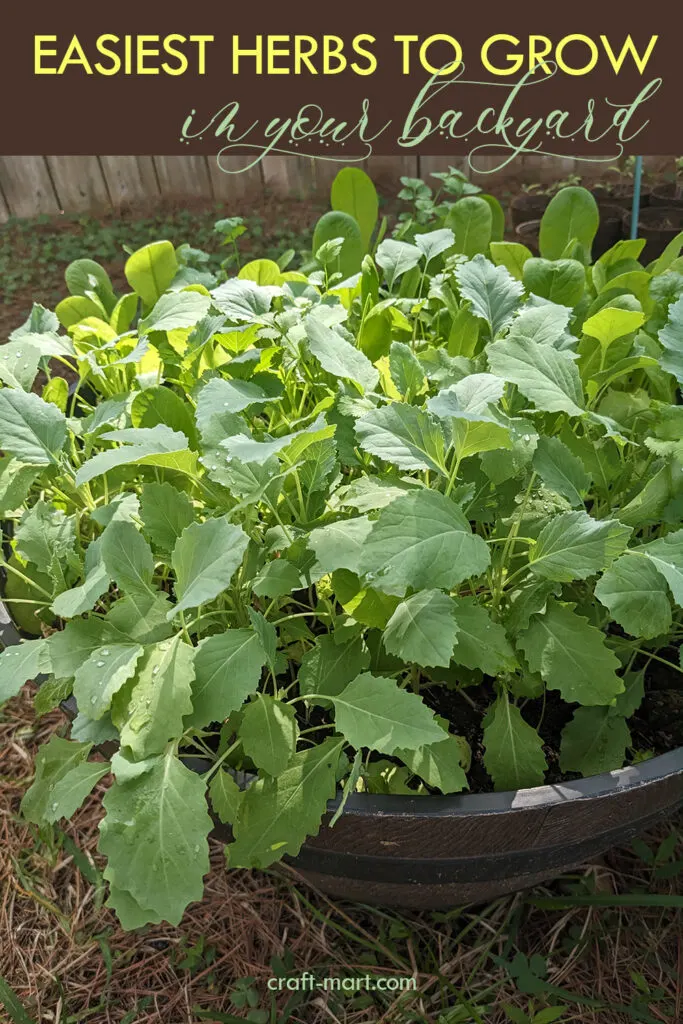Learn about the easiest herbs to grow so you can start your own perennial herb garden. Check out our interactive map to check your USDA growing zone.
Are you tired of spending money on herbs at the grocery store that go bad before you can use them all? For this reason, why not grow your own?
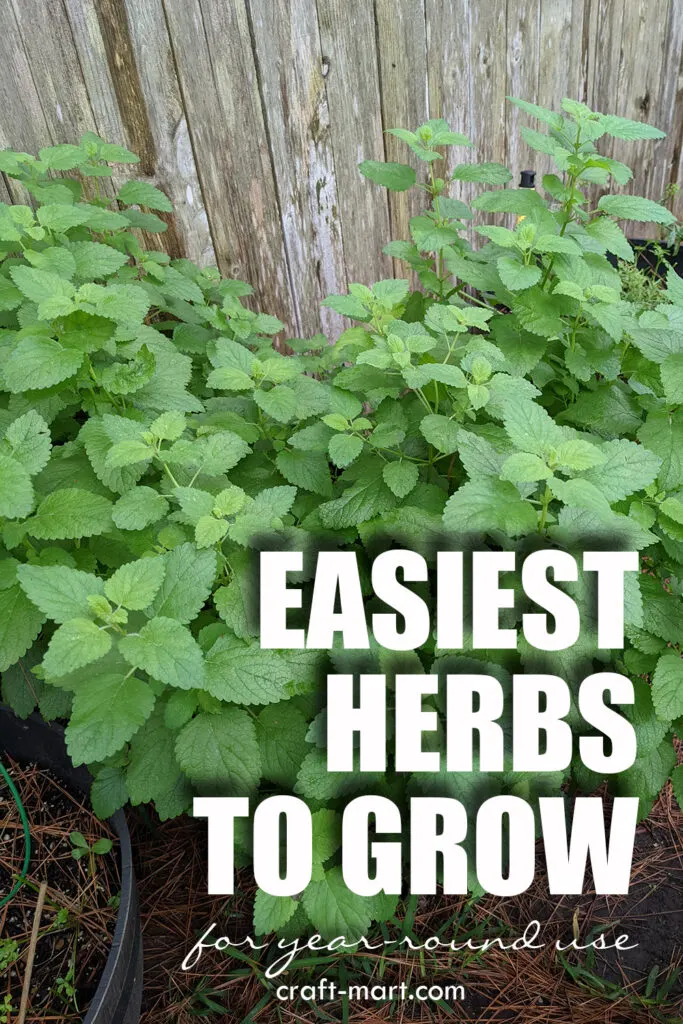
Perennial herbs are not only easy to grow, but they also provide a continuous supply of fresh herbs year-round. In fact, we’ll teach you everything you need to know about selecting, planting, and caring for a variety of perennial easiest herbs to grow.
Furthermore, you’ll learn how to harvest and use them in your cooking and even how to preserve them for later use. With these expert tips, you’ll be able to grow your very own herb garden and elevate your meals with fresh, flavorful herbs. Let’s start!
Choose the Right Location for Your Herb Garden
To ensure your herb garden thrives, it’s important to choose the right location. Most herbs prefer a sunny spot with well-draining soil.
For this reason, look for an area that receives at least six hours of sun a day, preferably in the morning when the sun is less intense. If your garden has partial shade, you can still grow herbs like mint, parsley, and chives that can tolerate less light.
If you live in an area with hot summers, herbs like mint and cilantro might do better in a spot that gets some afternoon shade. Also, it is important that your herbs have good drainage and aren’t in an area that is prone to flooding or standing water.
Furthermore, consider the soil condition. Most herbs do well in soil with a pH level of 6.0 and 7.0.
If your soil is too acidic, add lime to raise the pH level. If it’s too alkaline, add sulfur. As a matter of fact, your local garden center can help you test your soil and recommend any necessary amendments.
Additionally, consider the proximity of your herb garden to your house, as you’ll want easy access to your herbs when you’re cooking. With this in mind, plant herbs that have similar watering needs close together to make watering easier.
By taking these factors into account, you’ll be able to select the perfect location for your herb garden and set it up for success.
Now that you’ve picked out your location, it’s time to select the easiest herbs to grow among perennials. As a result, these herbs require less maintenance and will provide you with year-round flavor and nutrition.
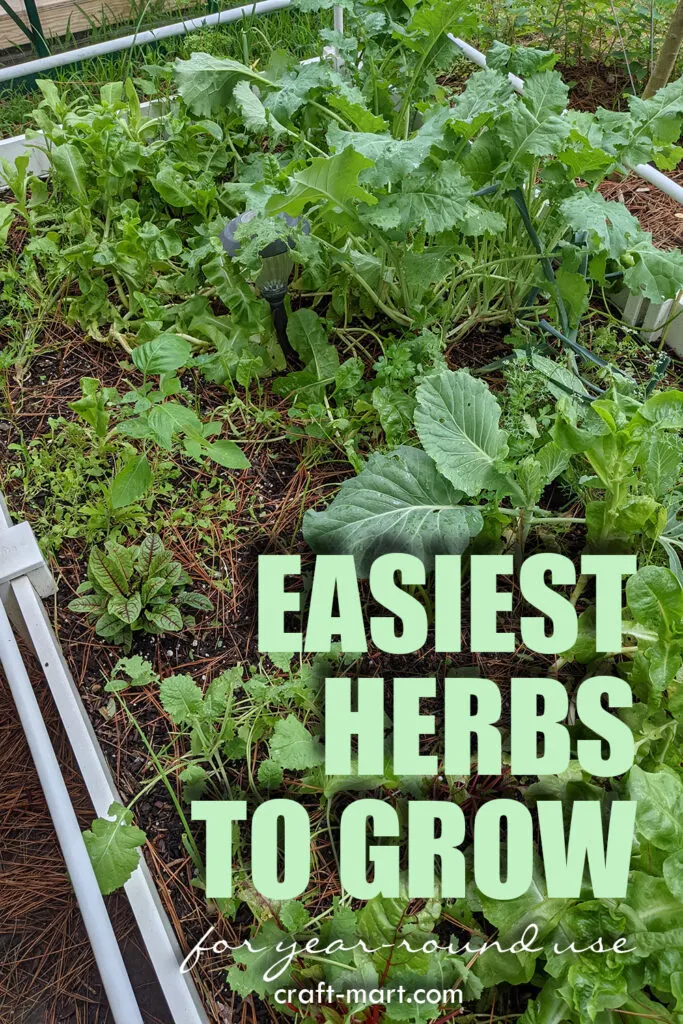
Select the Easiest Perennial Herbs to Grow
When it comes to growing perennial herbs, it’s important to choose the right ones for your particular environment and level of expertise. While some herbs are hardier and easier to grow than others, some require more specialized care and attention.
Most importantly, if you’re new to herb gardening, it’s best to begin with herbs that are resilient.
Some of the easiest perennial herbs to grow include thyme, oregano, mint, and chives.
Thyme has ability to thrive in a variety of soil types and conditions. Moreover, it thrives in hot, dry climates.
Oregano is another hardy herb that requires little maintenance and can grow in pots or in the ground.
Mint is a fast-growing herb that can be used in a variety of dishes, and is particularly well-suited to shady areas.
Chives, on the other hand, are a great choice for beginners because they require minimal watering. Uniquely, you can harvest it continuously throughout the growing season.
Additionally, you plant them once while enjoy year after year.
By selecting the easiest perennial herbs to grow, you can set yourself up for success and gain confidence in your herb gardening abilities. Once you’ve mastered these herbs, you can branch out and experiment with more challenging varieties.
But for now, focus on building a strong foundation of your herb garden by selecting herbs that are best for your environment and skill level.
With your herbs carefully chosen, it’s time to move on to the next step: planting and caring for your perennial herbs.
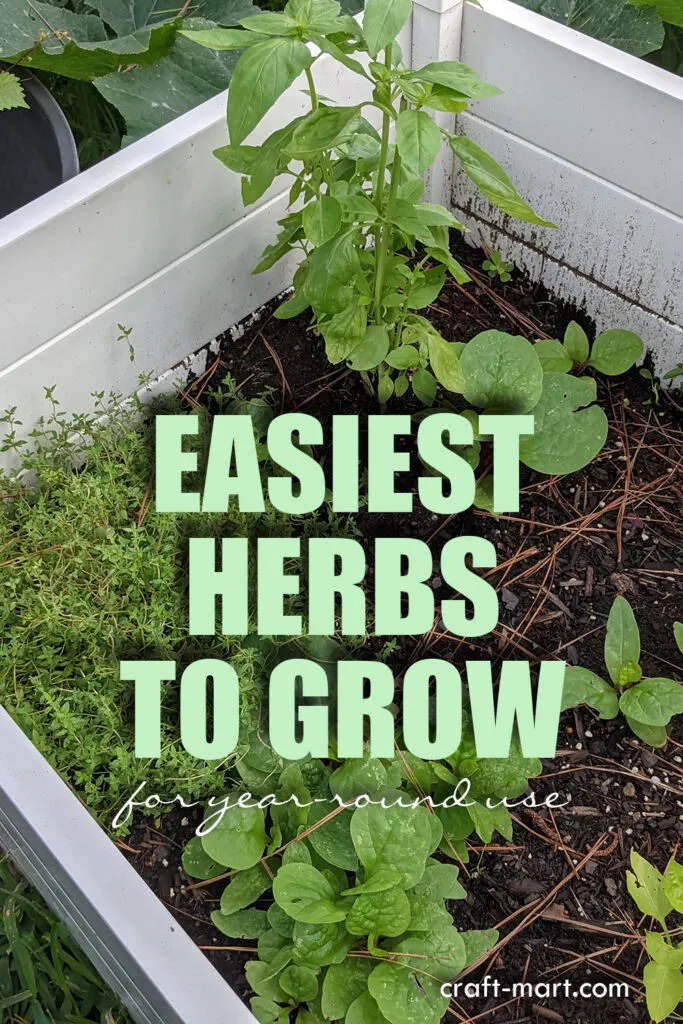
Planting and Caring for Easiest Herbs to Grow
By selecting the easiest perennial herbs to grow, you can set yourself up for success and gain confidence in your herb gardening abilities. Once you’ve mastered these herbs, you can branch out and experiment with more challenging varieties.
With your herbs carefully chosen, it’s time to move on to the next step. Start by choosing a location that receives ample sunlight and has well-draining soil.
Additionally, make sure to space your plants according to their needs, as some herbs require more room to grow than others.
When planting, be sure to dig a hole that’s slightly larger than the root ball of your plant. This will allow room for the roots to spread out and establish themselves quickly. As you plant, gently firm the soil around the base of your herb to remove any air pockets.
Once your herbs are planted, it’s important to establish a watering routine. While some herbs prefer dryer conditions, most require consistent moisture to thrive.
For this reason, check the soil regularly and water when it feels dry to the touch. Equally importantly, be careful not to overwater.
In addition to watering, fertilizing your herbs can help them grow strong and healthy. Use an organic fertilizer or compost once a month during the growing season to provide your herbs with the nutrients they need.
By following these simple steps, you’ll be well on your way to growing a thriving herb garden. Now, let’s move on to the exciting part: harvesting and using your perennial herbs.
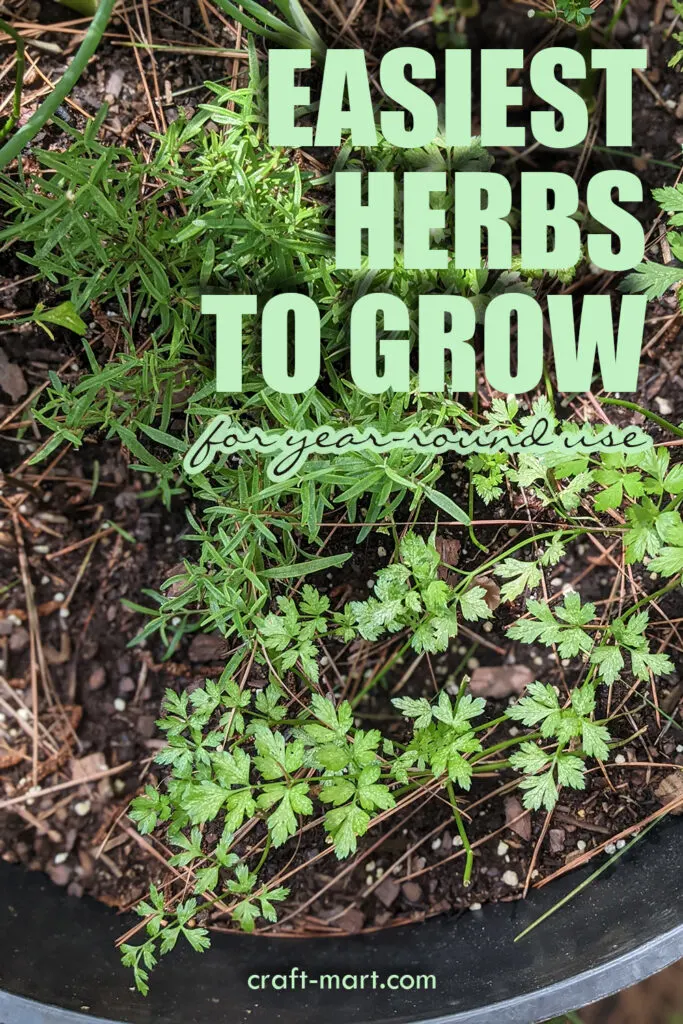
Harvesting and Using Your Perennial Herbs
Once your herbs are growing strong and healthy, it’s time to start harvesting and using them in your cooking or for medicinal purposes. When harvesting, it’s important to wait until your herbs are mature enough to provide the most flavor and potency.
This usually means waiting until they are at least six inches tall and have plenty of leaves.
When you’re ready to harvest, use sharp scissors or pruning shears to cut the leaves or stems just above a node. This will encourage new growth and help your plants produce more leaves and flowers.
Once harvested, rinse your herbs gently to remove any dirt or debris, and then pat them dry with paper towels. You can use perennial herbs like thyme, rosemary, and sage both fresh and dried.
To dry your herbs, hang them upside down in a well-ventilated area away from direct sunlight. Once dry, store them in airtight containers in a cool, dark place to retain their flavor and potency.
Whether you’re using your herbs for cooking, making teas, or creating natural remedies, harvesting them is a rewarding and satisfying experience.
As a matter of fact, pruning and maintaining your herb garden regularly, you’ll continue to have a steady supply of fresh and flavorful herbs throughout the year.
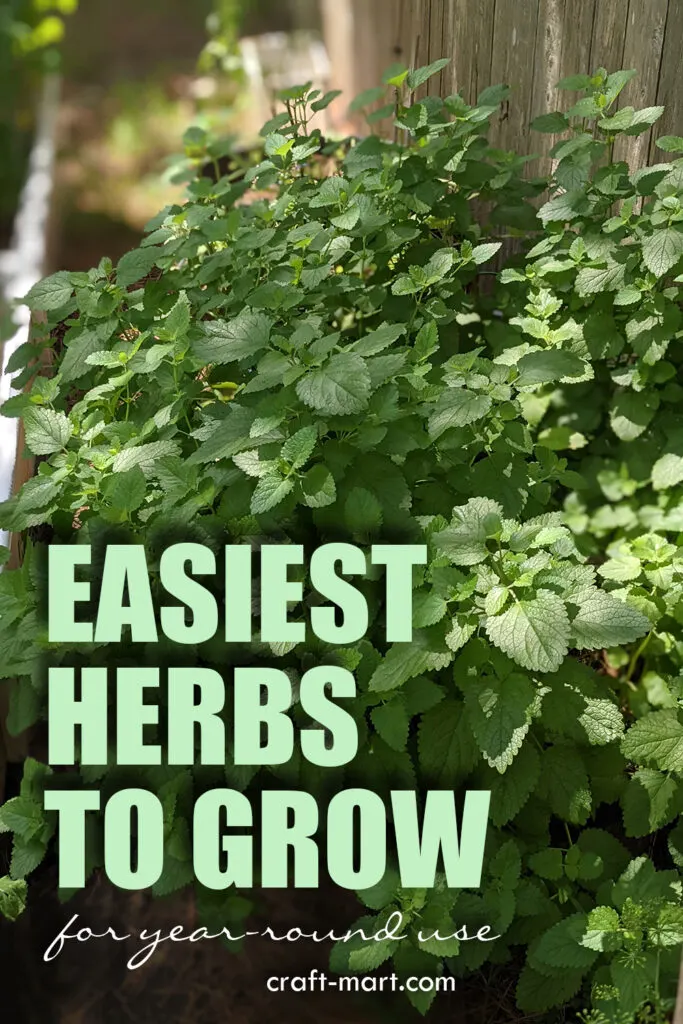
Pruning and Maintaining Your Herb Garden
To keep your perennial herb garden thriving, it’s important to give them a little love and attention to keep them healthy and productive.
Regular pruning will not only help to keep their shape, but it will also encourage new growth. Likewise, it will prevent them from becoming woody and unproductive.
When pruning your herbs, be sure to use a sharp pair of scissors or pruning shears to avoid damaging the plant. Remove any dead or yellowing leaves, as well as any stems that are too woody or thick.
You can also pinch back the tips of the branches to promote bushier growth, especially in rosemary.
In addition to pruning, it’s important to keep your herb garden well-maintained. Ensure that they are receiving enough water and sunlight, and keep an eye out for any pests or diseases that may be affecting the plants.
Regular weeding and mulching can also help to keep your herb garden healthy and productive.
By taking the time to prune and maintain your herb garden regularly, you’ll continue to have a bountiful supply of fresh and flavorful herbs to use throughout the year.
Furthermore, you can even preserve your herbs for later use – we’ll show you how in the next section.
Preserving Your Perennial Herbs for Later Use
By taking care of your perennial herb garden, you’ll reward yourself with an abundance of fresh and flavorful herbs throughout the year. But, what do you do with the excess herbs that you can’t use while they’re still fresh?
Preserving them is a great way to make sure you have access to your favorite herbs during the off-season.
One way to preserve your perennial herbs is by drying them. This method works well for herbs like rosemary, thyme, and sage.
To dry your herbs, simply tie a bundle of stems together and hang them upside down in a warm, dry place. Once the herbs are completely dry, remove the leaves from the stems and store them in an airtight container.
Freezing Your Herbs
Another method for preserving herbs is by freezing them. This option is best for herbs like basil, cilantro, and parsley.
To freeze your herbs, chop them up and place them into an ice cube tray. Fill the tray with water or oil and freeze. Once frozen, remove the herb cubes from the tray and store them in a freezer-safe container.
By preserving your herbs, you can enjoy the taste and health benefits of your favorite herbs even when they are out of season. You can use them in the winter for hearty soups, stews, and other dishes.
In conclusion, growing perennial herbs is not only a great way to add flavor to your meals but it also has numerous benefits for your health. From choosing the right location to pruning and maintaining your herb garden, this ultimate guide has provided you with expert tips on how to grow and care for your own herb garden.
Remember, a little planning and care can result in a bountiful harvest of herbs that you can preserve and use in your kitchen and medicine cabinet.
Check out our other resources for gardening and homesteading:
- Easiest Vegetables to Grow from Scraps
- Easy Fruit to Grow
- USDA Plant Hardiness Zones Map by Zip Code
- 6 Landscaping Ideas for Front Yard on a Budget
- Why are you not drinking Ashitaba Tea? Ashitaba health benefits explained.
So what are you waiting for? Get out there, plant some herbs, and enjoy the rewards of your own homegrown harvest. As the saying goes, “Plant herbs, not lawns.” Happy gardening!


